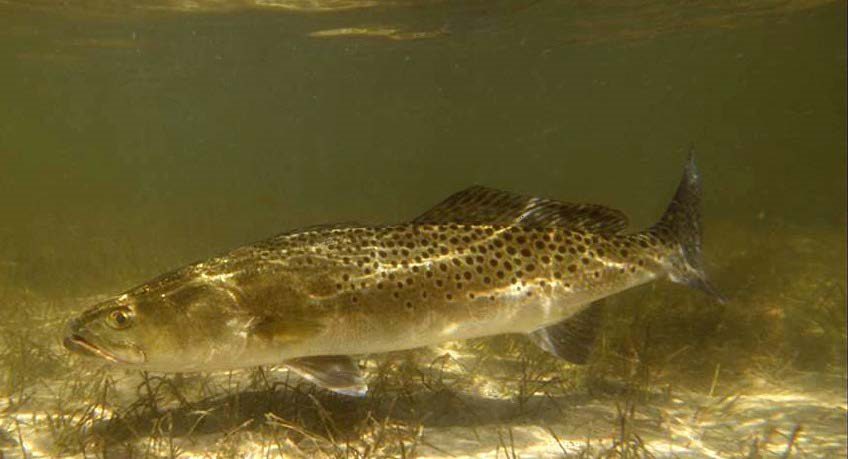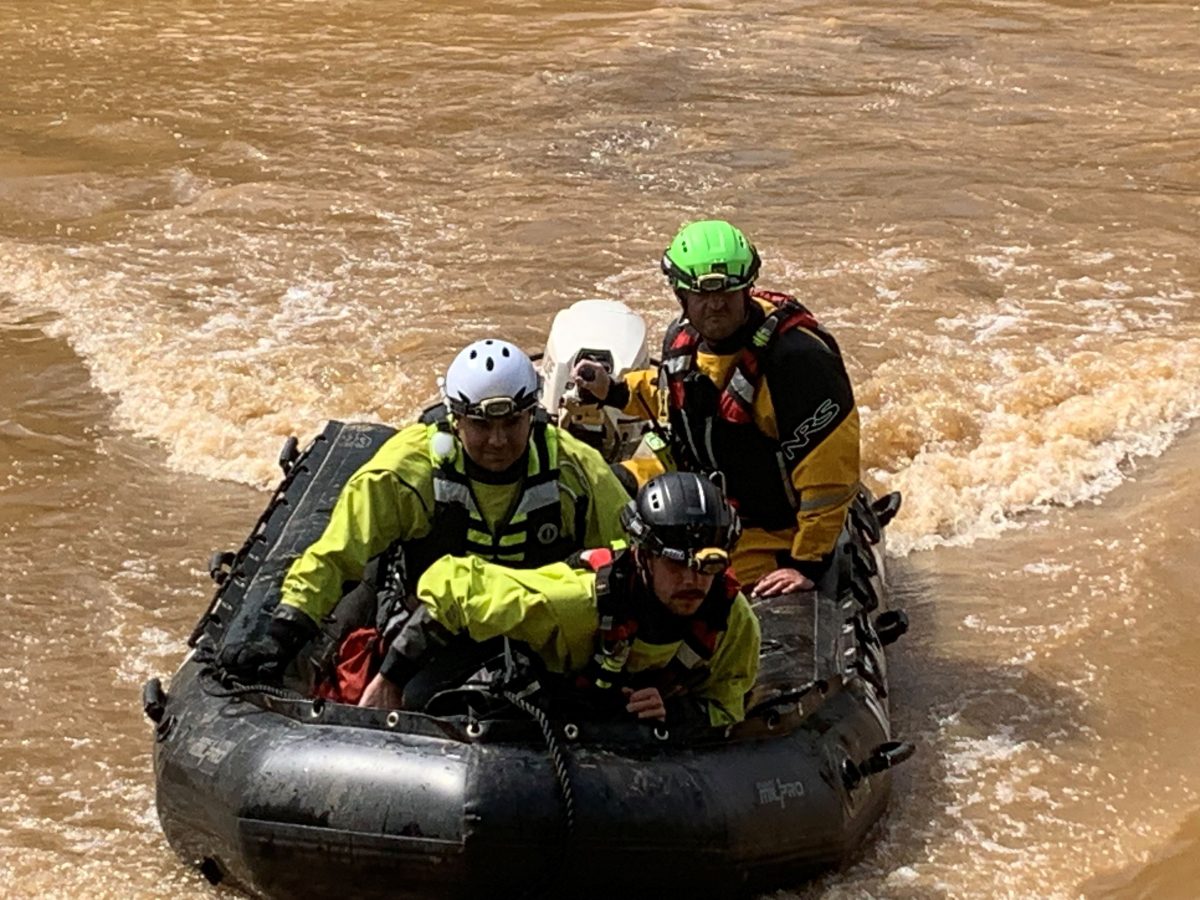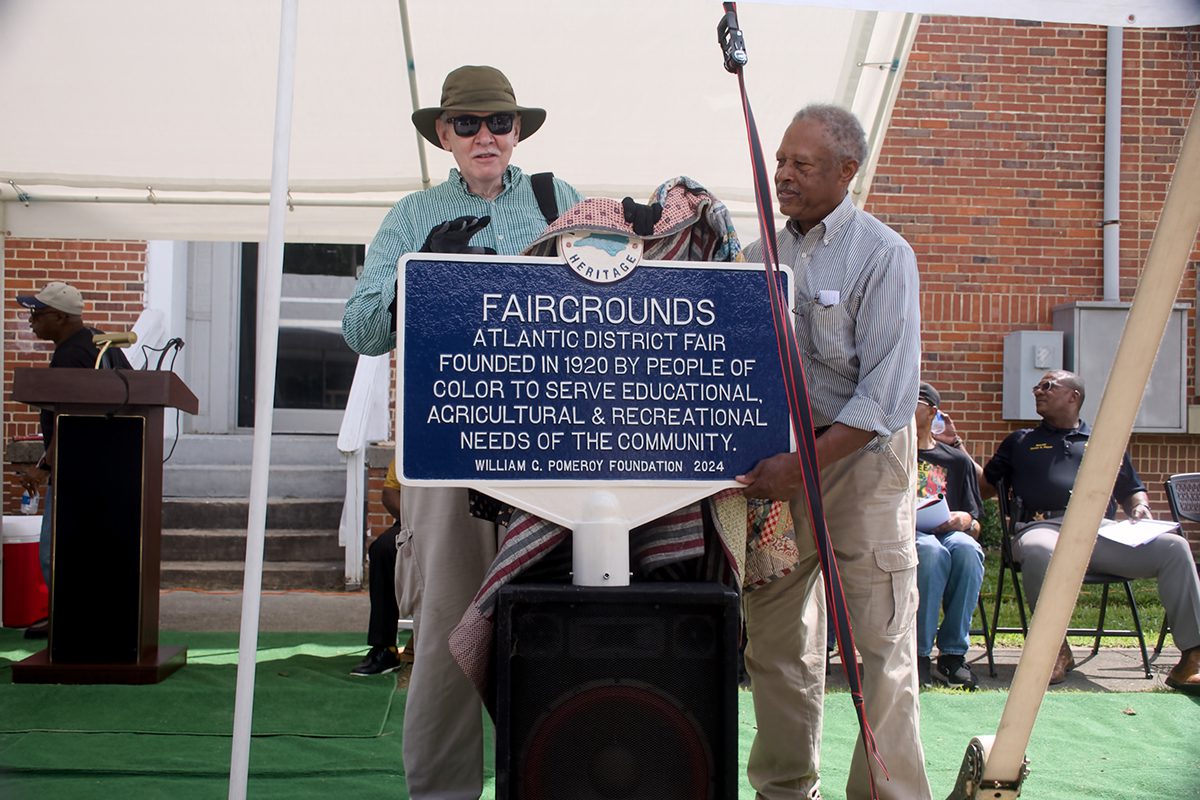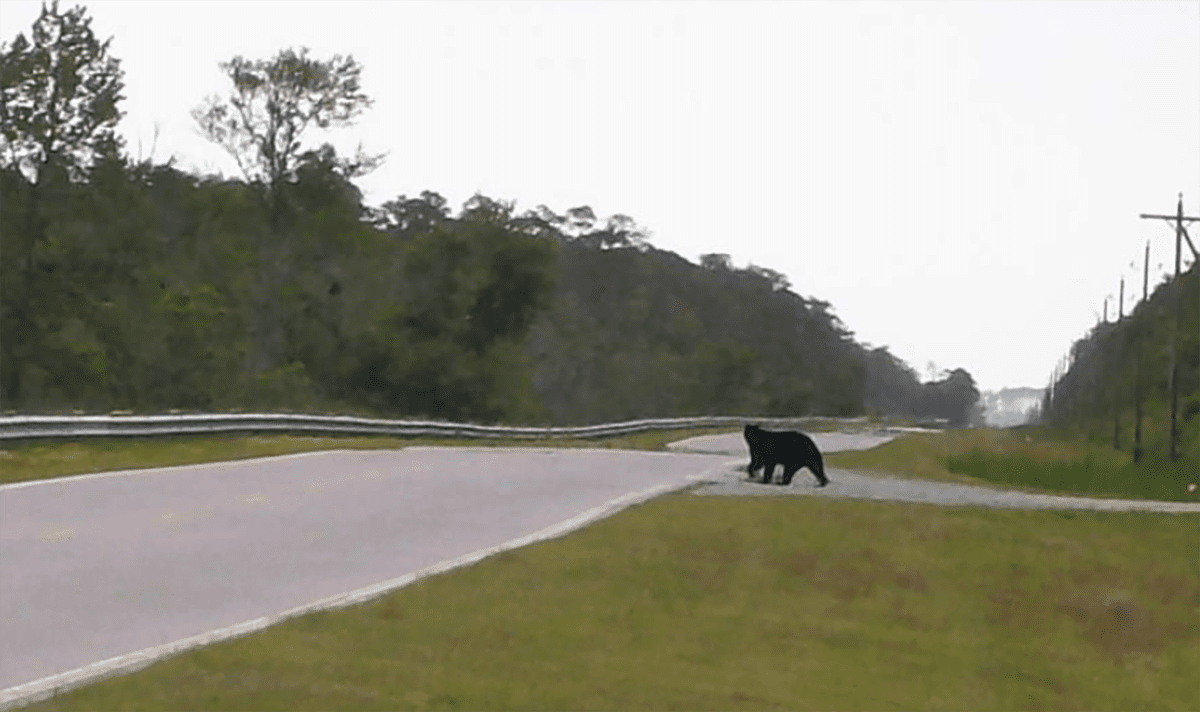
First of two parts.
EAST LAKE — From a half-mile away, the red wolf was a blur on the flat farmland within Alligator River National Wildlife Refuge. Through binoculars, the young male was strikingly muscular, striding with confidence on the dirt access road, seemingly unperturbed by the spying humans.
Supporter Spotlight
“He’s a big guy — yeah, he’s close to 80 pounds,” said Joe Madison, manager for the U.S. Fish and Wildlife Service’s Red Wolf Recovery Program, while peering through his field glasses in late April from the cab of his truck. “If we got closer, he’d definitely start running, but I don’t want to do that.”
Madison, a wildlife biologist who has had earlier stints with grizzly bear and gray wolf management, is keenly focused on conservation and protection of the only wild red wolves in the world. He knows that the wolves’ instinctual fear of people is critical to their survival. The two biggest contributors to wild red wolf mortalities are directly related to interactions with humans: The first is intentional killing by gunshot or poisoning, the second is vehicle strikes.
After establishing cooperative programs with landowners and others in the community to prevent wolf shootings, officials with the refuge are now working with the North Carolina Wildlife Resources Commission and the North Carolina Department of Transportation on constructing wildlife crossings at both ends of the planned replacement bridge over the Alligator River on U.S. Highway 64 between Tyrrell and Dare counties.
The hope is that, beyond the bridge project, funding also will be available to build numerous crossings along U.S. 64, said Travis Wilson, a biologist with the North Carolina Wildlife Resources Commission Habitat Conservation Division.
“It’s kind of a standalone discussion on wildlife improvements in highway permeability improvements,” Wilson told Coastal Review. “It’s outside the scope of a highway project.”
Supporter Spotlight
The Center for Biological Diversity announced last week that an anonymous donor had pledged a $2 million match of other donations toward wildlife crossings across U.S. 64, which bisects the Alligator River and Pocosin Lakes wildlife refuges. If the additional $2 million can be raised by the nonprofit center and its supporters by the target date of Aug. 1, it could leverage an additional $16 million in federal funds.
Funding for $350 million in grants was provided in the Wildlife Crossings Program, established in the 2021 Infrastructure Investment and Jobs Act.
A million wildlife-vehicle collisions occur in the U.S. annually, costing more than $8 billion and resulting in thousands of injuries and hundreds of fatalities, according to the Federal Highway Administration website.
A second round of Highway Administration discretionary grants will be opened this summer under the Wildlife Crossing Pilot Program with the stated mission of reducing wildlife-vehicle collisions while improving habitat connectivity for terrestrial and aquatic species.
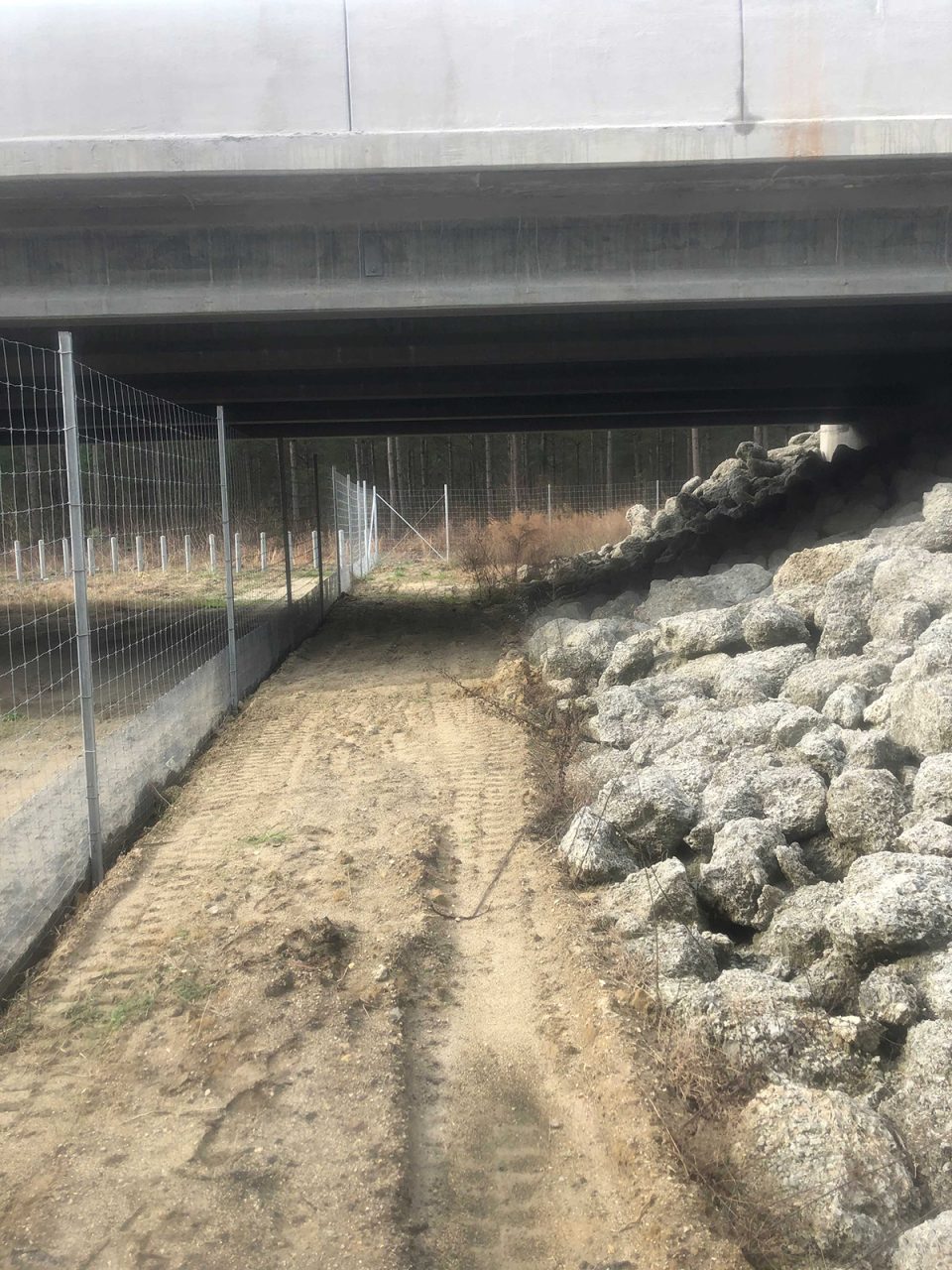
Marissa Cox, the Western Regional Team lead with NCDOT’s Environmental Policy Unit, said that her team intends to apply for a grant, but it does not know yet what the total cost of the project would be. NCDOT is using information from the proposed — and since dropped — U.S. 64 widening project design plans to try to estimate costs for the structures, she said in an interview.
“It’s very competitive, and there’s not a lot of funding,” Cox said about the grant program.
During the first round, she recalled, the amount of project applications far exceeded the available funds.
Although Cox said there are about 26 wildlife crossings in North Carolina, Wilson said that when standalone structures are included, there are “dozens and dozens” of crossings.
As part of a wildlife stewardship memorandum of understanding signed in March 2023 with Wildlife Resources, NCDOT is currently compiling information and Global Positioning System data on all the crossings that it has committed to, designed and constructed, she said. The agencies are also finalizing a joint Wildlife Crossing Guidance document to be made available online.
With U.S. 64 and other less-traveled highways cutting through the 1.7 million-acre management area encompassing public and private land in Beaufort, Dare, Hyde, Tyrrell and Washington counties, the wildlife crossings could benefit not only the survival of the red wolves, but also the taxpayer who is supporting the recovery program.
A recently updated red wolf management plan estimated costs of $328 million over 50 years, and that does not include the millions spent over the decades since the wolf conservation program began.
The red wolf had once roamed much of the Southeast, but overhunting and habitat loss decimated its population. In 1973, the species was listed as endangered under the Endangered Species Act. Fish and Wildlife, the agency charged with implementing the Endangered Species Act, first listed the red wolf as endangered in 1967, and it was declared extinct in the wild in 1980.
As part of an effort in 1987 to restore the species in the wild, four pairs of captive-bred red wolf pups, offspring of the few remaining from the wild population captured earlier in Louisiana, were released at Alligator River National Wildlife Refuge.
After a series of setbacks beginning around 2010 — with the wild population plummeting from as much as 130 to seven — the recovery program has been renewed and reinvigorated since 2022.
Currently, there are 18 known and collared red wolves and a total of about 20 to 22 wolves in the wild and 263 in the captive-breeding population.
Wildlife crossings have been studied, planned and – sometimes – built along roadways in northeastern North Carolina, but in coming years they are to be a more significant part of the focus on conservation of the fragile population.
“Wildlife crossings along one of North Carolina’s most dangerous highways are crucial to protecting the world’s most endangered wolf,” stated Will Harlan, southeast director the Center for Biological Diversity.
In a study done for NCDOT by the Virginia Polytechnic Institute and State University and completed in 2011, hair samples caught on a barbed fence were from 890 black bear crossings from March 2009 to March 2011 in the 147,432-acre Alligator River Refuge. The Virginia Tech study also found that 15 GPS-collared bears crossed the highway 99 times. In addition, 170 white-tailed deer, 200 bobcats and raccoons, and an additional 260 bear were caught on camera.
Surveys of roadkill from November 2008 to July 2011 showed eight deer killed. Between January 1993 and July 2011, factoring in historical data, there were 63 bear, 75 bats, 82 small mammals, 134 mid-sized mammals, 1,153 birds, 4,014 reptiles and 7,498 amphibians killed on the road. And in 2012, refuge biologists reported that 11 bear were hit by vehicles, not including those who ran off into the woods after being struck.
Data from the Virginia Tech study will be used to guide project estimates for crossings through the refuge, Cox said.
The Fish and Wildlife Service, in its February red wolf recovery program five-year status review, said that between 1987 and 2013, vehicle-wildlife collisions resulted in 34% of all mortalities related to humans; and there were 11 vehicle-related mortalities between 2019 and 2023.
“This mortality level would be expected to increase as habitat becomes more fragmented by roads and with increasing human traffic that would be expected with increased development,” the report said. “Additionally, this threat would also likely increase with increases in the population size of red wolf.”
Madison said that there is now orange reflective material on the GPS collars placed on the wild wolves to increase their visibility at night. There are also roadside mobile electronic message signs to warn drivers on all the highways.
Any wildlife crossings that are proposed separately from an NCDOT project, which would absorb some of the costs, will “not be inexpensive,” Wilson said.
“We have been successful in putting underpasses in coastal North Carolina in various places,” he said. Swampy Alligator River, with its numerous roadside canals, “has its own unique features and soil conditions,” Wilson said.
“That’s a big part of the conversation, building in the soil types that are out there, the fill and the engineering that have to go in place there. And as you know, anything that becomes more complex, the dollar figures begin to increase with that complexity,” he said.
“When it comes to the mammals that we’re talking about, if your structure is designed correctly and located correctly, and you have appropriate fencing, then you’re going to have mammals find those crossings and use those crossings,” he said. “And once they start, they’ll keep using them.”
The crossings provide habitat connectivity, as Wilson explained it.
After the New York Times recently published an article about wildlife crossings that included video of wildlife using an overpass, public interest in wildlife passages nationally increased dramatically.
“My phone blew up with reporters and the public wondering when is North Carolina going to do these things. And it felt like I spent a year on the phone every other day explaining to people that North Carolina has been doing it for two decades,” Wilson said. “The documents are memorializing a lot of what we’ve done but also will be good tools to give to people who have interest.”
Next in the series: Wildlife crossings dovetail with red wolf conservation science.




